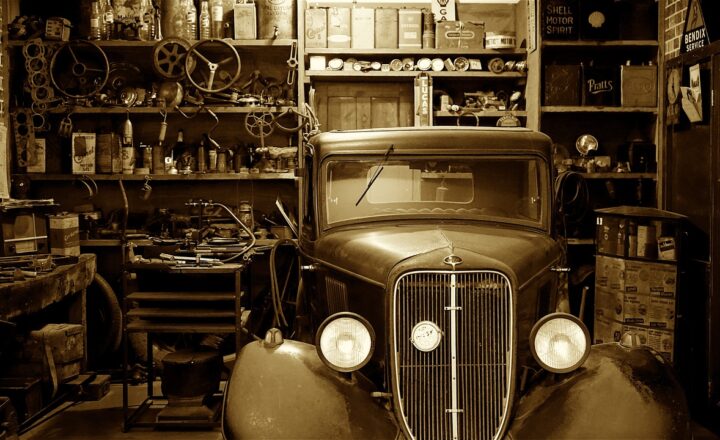Why Everyone Should Know Basic Car Maintenance and Repair Tips
November 14, 2024

Owning a car comes with a long list of responsibilities, one of which is knowing how to maintain and repair it. While many people rely on mechanics for their automotive needs, understanding basic car maintenance and repair can save you time, money, and frustration in the long run. In this article, we will explore the importance of knowing basic car maintenance and repair tips, highlight essential tasks every car owner should be familiar with, and provide step-by-step guides to help you get started.
1. The Importance of Basic Car Maintenance
Regular car maintenance is essential to keep your vehicle running smoothly and efficiently. Just like your health, your car requires regular check-ups and maintenance to prevent serious issues from developing. Here are some reasons why knowing basic car maintenance is important:
- Cost Savings: Basic maintenance can significantly reduce repair costs in the long run. Small issues often escalate into larger problems if left unattended, leading to expensive repair bills.
- Enhanced Safety: Regular inspections help identify potential safety hazards. A well-maintained car reduces the risk of accidents due to brake failures, poor tire condition, or other mechanical issues.
- Increased Lifespan of Your Vehicle: Regularly maintaining your vehicle can extend its lifespan. With proper care, you can enjoy your car for many more years than you might have thought possible.
- Improved Fuel Economy: A well-maintained vehicle operates more efficiently, leading to better fuel economy. Simple tasks like inflating tires to the correct pressure can make a noticeable difference in how far you can drive on a gallon of fuel.
- Boosted Resale Value: If you plan to sell your car in the future, a well-documented maintenance history can enhance its resale value. Buyers are more likely to pay a premium for a used car that has been regularly maintained.
In short, knowing basic car maintenance is not only beneficial but vital for every car owner.
2. Essential Car Maintenance Tasks You Should Know
Whether you’re a new driver or an experienced car owner, here are some essential maintenance tasks that everyone should be familiar with:
A. Checking and Changing Engine Oil
Engine oil lubricates moving parts and protects against wear. Regularly checking and changing the oil is crucial to engine health.
- How to Check Oil Level: Locate the oil dipstick. Remove it, wipe it clean, reinsert it, and pull it out again to check the oil level. The oil should be between the “Min” and “Max” marks.
- How to Change Oil: Gather necessary tools, such as an oil filter wrench, oil catch pan, and the right oil. Drain the old oil, replace the oil filter, and refill with new oil according to your car’s specifications.
B. Checking Tire Pressure and Tread Depth
Proper tire maintenance is essential for safety and fuel efficiency.
- How to Check Tire Pressure: Use a tire pressure gauge to ensure that your tires are inflated to the manufacturer’s recommended pressure, usually found on a sticker inside the driver’s door.
- How to Check Tread Depth: Use the penny test; insert a penny into the tread grooves. If you can see all of Lincoln’s head, it’s time for new tires.
C. Replacing Wiper Blades
Worn wiper blades can jeopardize visibility during rain. Here’s how to replace them:
- How to Replace Wiper Blades: Lift the wiper arm, press the release tab, and slide the old blade off. Slide the new blade on until it clicks, then lower the arm back into position.
D. Checking Fluid Levels
Maintaining proper fluid levels (coolant, brake fluid, power steering fluid, windshield washer fluid) is crucial for your vehicle’s performance.
- How to Check Fluid Levels: Locate each reservoir and check that the fluid levels are between the “Min” and “Max” marks. Top off as needed, using the recommended fluids for your car model.
E. Replacing Air Filters
Air filters prevent dirt and debris from entering the engine.
- How to Replace Air Filters: Locate the air filter compartment, usually accessible via the engine bay. Remove the old filter, clean the compartment if necessary, and replace it with a new filter.
3. Basic Car Repairs You Can Handle
In addition to maintenance, knowing how to perform basic repairs can be incredibly helpful. Here are a few tasks you can take on:
A. Changing a Flat Tire
Nothing can ruin your day like a flat tire, but changing it is easier than you might think.
- How to Change a Flat Tire:
- Find a safe, flat area to change the tire, turn on your hazard lights, and apply the parking brake.
- Loosen the lug nuts slightly, then raise the car with a jack.
- Remove the lug nuts completely and take off the flat tire.
- Replace it with the spare tire and hand-tighten the lug nuts.
- Lower the car back to the ground and then tighten the lug nuts completely using a wrench.
B. Jump-Starting a Car
If your car battery dies, knowing how to jump-start it can get you back on the road quickly.
- How to Jump-Start a Car:
- Position the working vehicle close enough to the dead vehicle for the jumper cables to reach.
- Connect the red cable to the positive terminal of the dead battery and then to the positive terminal of the working battery.
- Connect the black cable to the negative terminal of the working battery and then to an unpainted metal surface on the dead car.
- Start the working vehicle and let it run for a few minutes, then try starting the dead vehicle.
C. Replacing Headlight Bulbs
Driving with a burnt-out headlight can be dangerous. Here’s how to replace it:
- How to Replace Headlight Bulbs:
- Open the hood and locate the back of the headlight assembly.
- Disconnect the power connector and twist the bulb holder to remove the old bulb.
- Insert the new bulb (avoiding touching the glass) and reassemble the connector and holder.
4. Conclusion
Knowing basic car maintenance and repair tips is not only beneficial but essential for every car owner. These skills empower you to take control of your vehicle’s upkeep, save money on repairs, and ensure your safety on the road. Starting with tasks like checking oil levels, changing wiper blades, or changing a tire can set the foundation for more advanced knowledge in automotive care. So buckle up and get ready to take charge of your car’s maintenance for a safer and more economical driving experience!
Take charge of your car’s health. With just a little bit of knowledge, you can keep your vehicle running smoothly and avoid costly repairs down the road.





